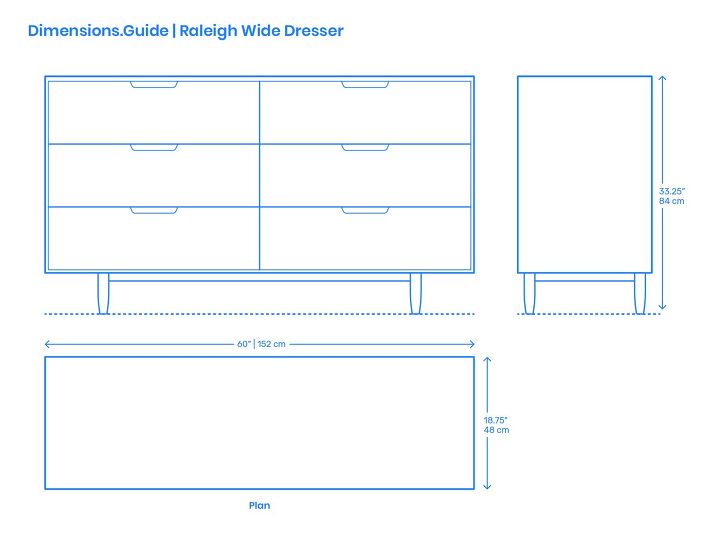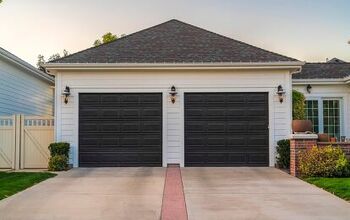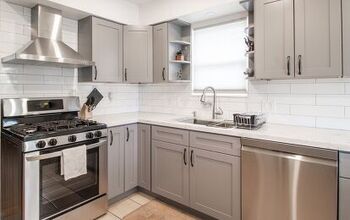Standard Dresser Sizes & Dimensions (with Drawings)

A dresser provides lots of necessary storage in a bedroom or even be a server in a dining room. You can use it to hold linens, clothing, accessories, and more, but determining the right standard dresser sizes is important. Go too small, and you waste storage space. Go too big, and you overwhelm the room.
A standard dresser is 36 to 60 inches wide, 26 to 44 inches tall, and 16 to 20 inches deep. But sizes can vary depending on the style, reaching closer to 70 inches long and over 50 inches tall. The average dresser contains 6 to 9 drawers, but you can find single styles with three drawers.
Choosing the right dresser size for your space involves determining what you plan to use it for and where it will go. Plus, it’s not just about the size of the dresser, but also the space you need around it. Therefore, keep reading to check out the different size options and how to pick the best dresser size for your room.
Standard Dresser Dimensions
You likely think of furniture with several drawers when you think of a dresser. But, beyond these basic qualities, a dresser can come in many configurations and sizes. Typically, a dresser is between 36 to 60 inches wide and 16 to 20 inches deep.
It stands about waist high, or between 26 and 44 inches tall. A single dresser, also called a chest of drawers, is a single set of drawers. Usually, this style of dresser has three or four drawers. The width of a single dresser would fall closer to the minimum side of the 36 to 60-inch range.
Double Dresser and Triple Dresser Sizes
A double dresser is likely another image that pops in your head when you think about this furniture piece. It’s essentially two sets of drawers in one. Double dressers usually have between 6 and 9 drawers.
This double dresser is 60 inches wide and 33.25 inches tall, with a depth of 18.75 inches. If you need a larger dresser or more storage, you could also consider a triple dresser. It’s simply a dresser with three sets of drawers in one and would measure closer to 70 inches.
The triple dresser is only slightly longer than the double because it usually has smaller drawers. The drawers can have the same depth and height but a slightly narrower width. We’ll talk a little more about dresser drawer sizes in a bit.
Highboy Dresser Sizes
If you have limited space but maximum storage needs, consider a highboy, or tall dresser. It features a similar depth and drawer size to standard dresser sizes, but it’s narrower and taller. It uses vertical space to give you the space you need for your belongings.
For example, this Raleigh Tall Dresser is 18.75 inches deep, similar to a standard dresser dept. But, it is taller at 50.5 inches and narrower at 30.5 inches. But it gives you five drawers, only one drawer less than a standard double dresser.
Combo Dresser Sizes
Another dresser option is a combo dresser, which blends drawers and cabinets into the same unit. A combo unit provides some more versatile storage options, incorporating shelves into the mix.
Combo dressers come in similar sizes to standard dressers. You can also opt for highboy-style combo dressers that are slightly taller than standard dresser sizes.
Kids Dresser Sizes
If you’re looking for a dresser for a kid’s room, there are dresser sizes specific to children. These dressers are typically shorter and shallower. However, they can be the same width as standard dresser sizes.
For example, this kid’s dresser with fabric drawers is almost 40 inches long. But it’s only 21.7 inches tall, and 11.4 inches deep. It takes up less space, which is good since kids’ rooms tend to be smaller. Plus, the shorter height makes it perfect for kids to reach all the drawers.
How to Choose the Right Dresser Size
With so many dresser styles and dresser sizes to choose from, how do you pick the one best for you? Of course, you want to find a dresser that suits your style and your home’s interior. However, it’s also essential to know how much space you have and what you plan to store in the dresser.
Consider Your Storage Needs
Before you purchase a dresser, what do you plan to put in there? Will it hold t-shirts, pajamas, and other clothing? Do you plan to store lingerie in it as well? If so, you can select dressers with shorter upper drawers and deeper bottom drawers.
Shallower drawers are perfect for things like socks, underwear, and handkerchiefs. Then, it frees up more space for larger drawers that can hold bulkier clothing like jeans and sweaters.
Do you need three drawers, six drawers, or more? A combo dresser will give you the necessary shelves if you need to store shoes, books, or other items.
Measure Your Available Space
Once you’ve nailed down your storage needs, measure your available space for your dresser. Decide which wall your dresser will go on and see what space you have to work with. Measure the width, depth, and height.
Also, consider that most dressers come with a mirror. If yours doesn’t, it’s common to hang a mirror above a dresser. If you plan to have a mirror above the dresser, consider that when measuring the height.
Consider the Ceiling Height
You might not think too much about your ceiling height when you choose a dresser. But if you don’t select the proper height dresser for your ceiling, it can throw off the scale.
A taller dresser might work best if your bedroom has overly high ceilings. Conversely, if you have 8-feet ceilings, you would likely want to avoid using an excessively tall dresser.
Necessary Clearance Around a Dresser
When measuring for your dresser, don’t forget to allow enough room around it. You should have about 42 to 48 inches of space in front of your dresser. This space allows enough room for you to open and access the drawers.
How Big of a Mirror Do You Need for Your Dresser Size?
A good rule of thumb is for the mirror to be between ⅔ and ¾ the width of the dresser. Additionally, it should be shorter than the dresser.
For example, if your dresser is 40 inches tall, your mirror should be less than 40 inches tall. If the dresser is 60 inches wide, the mirror should be between 40 and 45 inches wide.
Where Is the Best Place to Put a Dresser?
Your best options for dresser placement are next to your bed, across from the bed, or in the corner. You can also place it on the wall at the foot of your bed. The idea is to showcase your dresser while keeping it accessible and functional.
What Are the Best Dressers for a Small Space?
Opt for a more vertical dresser if you’re working in a limited space. You can also consider using a kid’s dresser in your room and working extra storage in elsewhere. Look for slim lines, a sleek dresser style, and slightly shallower depth.
What Are Dresser Drawer Sizes?
Small dressers usually have drawers 12 inches wide, 14 inches deep, and 4 inches tall. Medium dressers typically have drawers 16 inches deep, 6 inches tall, and about 28 inches wide.
Large dressers have drawers 8 inches tall, 18 inches deep, and roughly 30 inches wide. Of course, drawer size can vary based on the dresser, so always check the specific dimensions of your piece.
Wrapping Up Dresser Sizes
Standard dresser sizes are between 16 and 20 inches deep and 36 and 60 inches wide. The height of a standard dresser is roughly waist-high, or between 26 and 44 inches. But dressers can be smaller, longer, or taller than these measurements depending on the style and size you choose.
Consider your available space, necessary clearance, and storage needs when shopping for a dresser. You can also opt for a combo dresser with cabinets to provide more versatile storage. No matter what dresser you choose, make sure it gives you the look and storage you need.

Stacy Randall is a wife, mother, and freelance writer from NOLA that has always had a love for DIY projects, home organization, and making spaces beautiful. Together with her husband, she has been spending the last several years lovingly renovating her grandparent's former home, making it their own and learning a lot about life along the way.
More by Stacy Randall

































